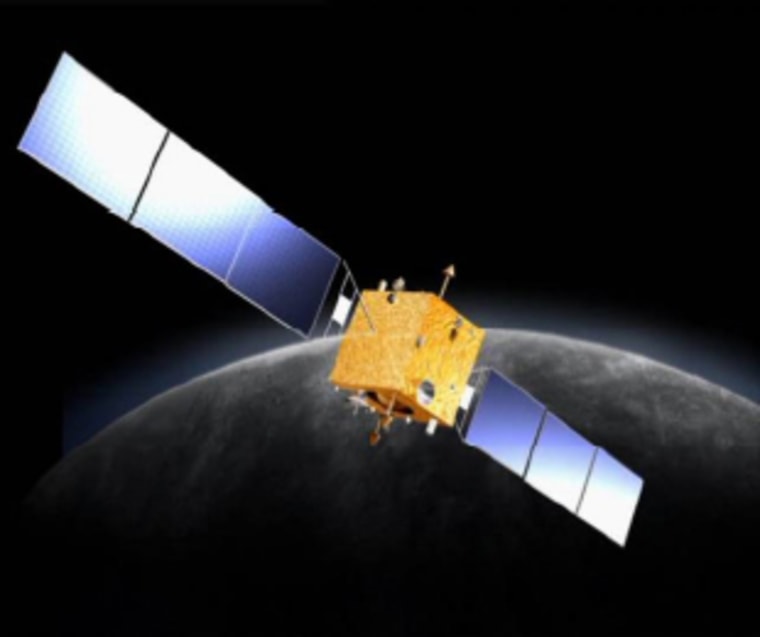A Chinese satellite successfully entered lunar orbit Monday, a month after rival Japan put its own probe into orbit around the moon, but Chinese officials denied there was any competition between the two nations.
Chinese space officials said the Chang’e 1 satellite, part of the country’s ambitious space exploration plans, entered lunar orbit after completing a planned braking operation.
China plans to keep the Chang’e 1 — named after a mythical Chinese goddess who flew to the moon — there for one year, about the same length of time as Japan’s probe. China launched its satellite late last month, while Japan put its into space in September.
The timing of the launches raises the prospect of a space rivalry between the two Asian nations, with India possibly joining in if it carries through on a plan to send its own lunar probe into space in April.
But Long Jiang, deputy commander of spacecraft systems of China’s lunar exploration program, said Beijing wanted to use its space program to work with other countries.
“We are willing to cooperate with the rest of the world to the benefit of humankind, but as to what kind of cooperation, it depends on specific circumstances,” Long told a news conference.
Success serves to demonstrate power
The Chang’e 1 blasted off on top of a Long March 3A rocket on Oct. 24 from the Xichang Satellite Launch Center in Sichuan province in southwestern China.
“All of the subsystems of the Chang’e 1 are in normal operation so far,” said Pei Zhaoyu, spokesman for the China National Space Administration.
The Chang’e 1 has survived the most critical part of its journey, Pei said. It had to enter the moon’s orbit at the right time and speed, otherwise it could have hit the moon or flown by it.
He said the satellite’s success was a sign of China’s advanced engineering. “The project is a comprehensive demonstration of China’s economic, scientific and technological power.”
U.S. Defense Secretary Robert Gates, who is on a two-day visit to China, commended China’s Defense Minister Cao Gangchuan over the lunar mission.
“I congratulate him and the people of China on this achievement. It’s clearly a credit to Chinese industry and innovation,” Gates said.
One small step in moon program
The lunar mission adds depth to a Chinese space program that has sent astronauts orbiting the Earth twice in the past four years.
Slideshow 12 photos
Month in Space: January 2014
Chang’e 1 is the first step of a three-stage moon mission. In about 2012 China plans an unmanned lunar landing with a rover. In the third phase, about five years later, another rover is to land on the moon and be returned to Earth with lunar soil and stone samples.
China plans a new generation of more powerful Long March 5 rockets able to lift more weight to the moon — and possibly a manned mission — but Pei told the news conference these wouldn’t be used until after 2012, missing the second phase.
According to Japanese news reports last week, Japan plans to send an unmanned probe to land on the moon by 2015.
It would cost about $437 million and consist of an unmanned lander, a rover to study the lunar surface and a small satellite to transfer data, according to the Asahi and Mainichi newspapers.
China’s space ambitions
Chang’e 1’s goal is to analyze the chemical and mineral composition of the lunar surface. It will use stereo cameras and X-ray spectrometers to map three-dimensional images of the surface and study the moon’s dust.
The 5,070-pound (2,300-kilogram) satellite is expected to transmit its first photo back to China late this month.
China sent its first satellite into Earth orbit in the 1970s but the space program only seriously took off in the 1980s, growing apace with the country’s booming economy.
In 2003, China became only the third country in the world after the United States and Russia to put its own astronauts into space.
But China also alarmed the international community in January when it destroyed an old satellite with a land-based anti-satellite missile.
(Copyright 2007 by The Associated Press. All Rights Reserved.)

